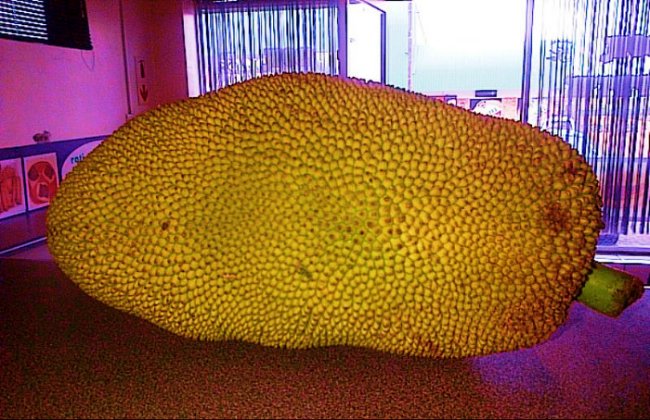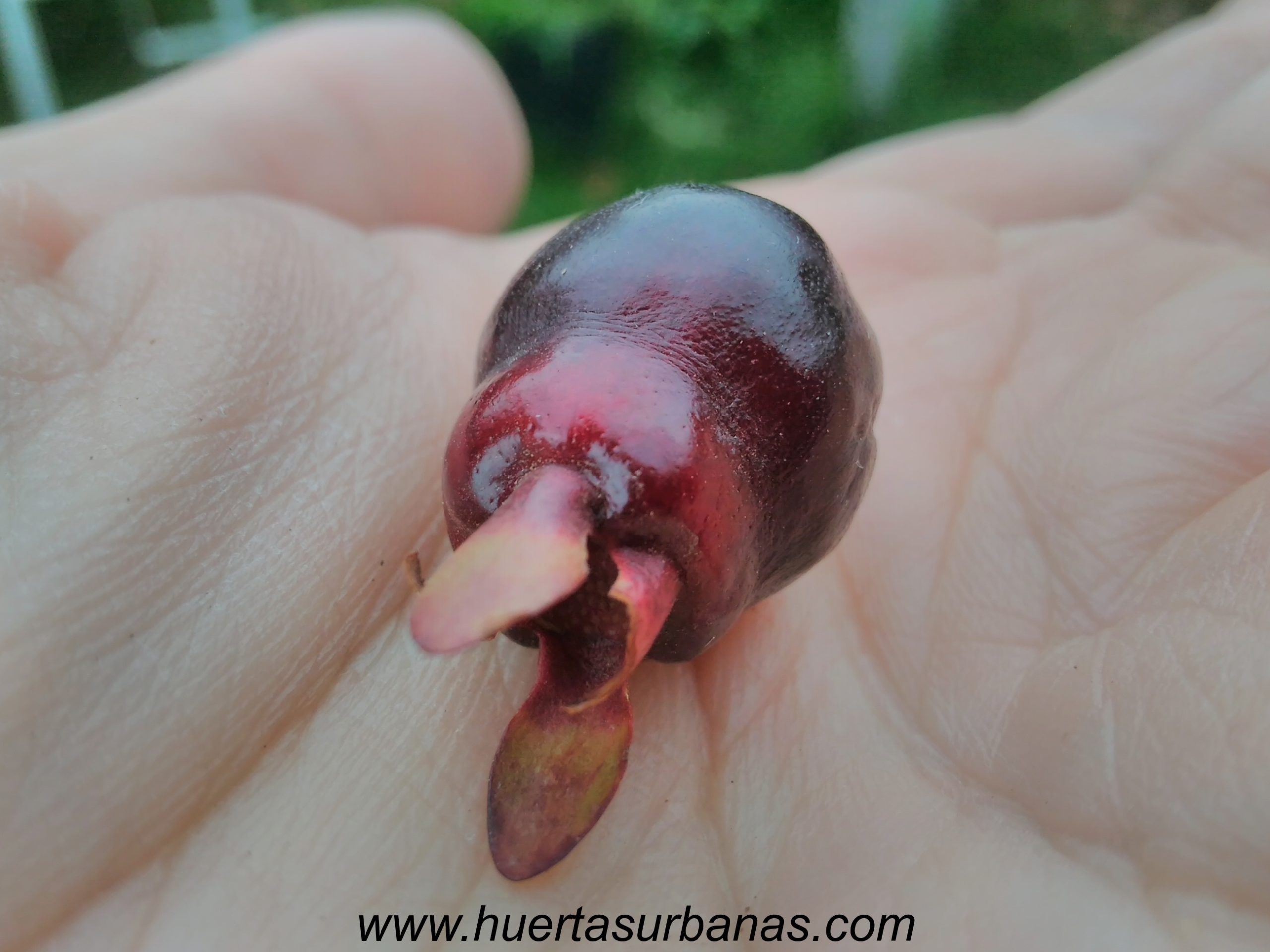These fruis are from a +/- 8 years old tree purchased to a nursery at Quilmes, planted on our urban garden, now producing more than 150 fruits (never counted them really); a lot of people is waiting for its seeds and I have to save some to myself. We have four 4 years old more guabijus (3 poted and 1 in the food forest) from another nursery (so they may be different) growing fine that can begin producing on 2014-2015; the rest, 15 more trees are still very young, 2 years old, and there are some seedlings from the tree of Buenos Aires I tried the fruit on january 2013.
Most of the fruits I tried the last year were unripe because I didnt harvested them: a very kind elderly couple helped me in the adventure a year ago, they sent the fruits from Buenos Aires to Junín; I liked them, but maybe I may never got to try a properly mature guabiju as now.
The guabiju fuit it’s just sweet and the pulp is very pleasant: I’m basing this on my own experience but have not yet tested them with family and friends. In Uruguay they are producing it comercially, see this:
http://tropicalfruitforum.com/index.php?topic=5088.0
The texture of the flesh is very pleasant, like a grape or plum, a bit (just a bit!) acid and bitter without astringency.
I am crazy about guabiju, but the “peoples taste” will be done this next week as more fruits start to get properly ripen.
Do they have any strong flavors or smells like guava?
Smell: no. Pleasant and very soft aroma in the pulp. If you dont hurt the skin, will almost dont smell anything. The flowers had a nice perfume.
The skin has a strong (similar to eucalyptus or to crushed guabiju leaves) sour flavour and I like it, but many people will like to eat it without the skin (where I believe there should be most of the antioxidant capacity, but this is something we should corroborate, as in other myrtaceae fruis the antioxidant capacity is higher near the seeds)
I am now smelling skins after opening the fruits and reminds me of roses … yes, but it is less strong than the scent of roses. My wife smell the skin of eaten fruits and she said it reminds her to “sour grapes”, and it’s right.
That sour skin flavour makes it versatile to prepare jams or salty foods, in my opinon. I am thinking about ice cream and jam, it would be great.
When you bite the fruit with skin and all, it makes a noise when breaking and the sweet unique flavor of the pulp hits you immediately. I think making that noise should be similar to Jaboticaba (never tried a jaboticaba). The black pitanga I tried some weeks ago was sweeter.
The more mature the fruit, pulp is juicier and sweeter.
If unripe, the pulp can be somewhat sour, but when properly ripe it’s not sour at all (or just a bit pleasant sour and a bit acid, that’s what it gives it some more personality). It didnt remind me any other fruit in terms of flavour, so for me this is a plus.
Another interesting thing is that you can harvest it unripe and green and it will turn black along the days, but I didnt did that a lot and dont really know if they can be properly ripe outside the tree. The skin is relatively “hard” and can keep the fruit for some days, maybe a week without refrigeration? I guess in the fridge will be 2 weeks of more.
Bigger fruits has 2 or 3 seeds. The percentage of pulp was something near 75%
I will be reporting when I try more ripen fruits (wait till they fall of the tree) and about some jelly or jam I want to do.
January, 6: size
From 2 to 2.5 cm, so they are bigger than usual, but not sooo big.
Today, some guabijus (not fully ripe, they were good but had not yet fallen of the tree [see the photo above]) were tested by 3 women, one aged 37, and two 65 years old or so. The first woman peeled the fruit and said it smelled like orange, then ate the flesh and said it was something like the scent of eucalyptus leaves, but much less strong, the taste was not that, it was different, and said the pulp texture (not the flavour) was like the texture of a very ripe peach (it was the more ripe fruit of all these batch), or custard. She liked the fruit but not so much the pulp closer to the seed because it is somewhat “slimy”. A personal taste, she dont like most of the foods in the world!
Another lady bited the fruit peel and all and tasted the flesh, spitting the shell. said “me ecantó!” which means, “I loved it!”; she tasted two fruits; and the last lady said she liked it and it was very sweet… when I asked if it remembered some fruit, said “grapes “.














